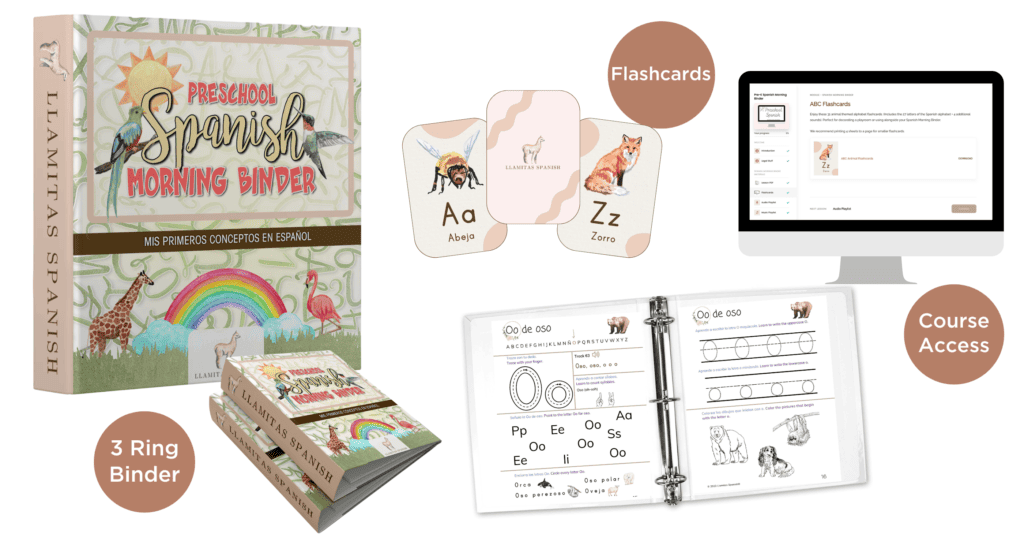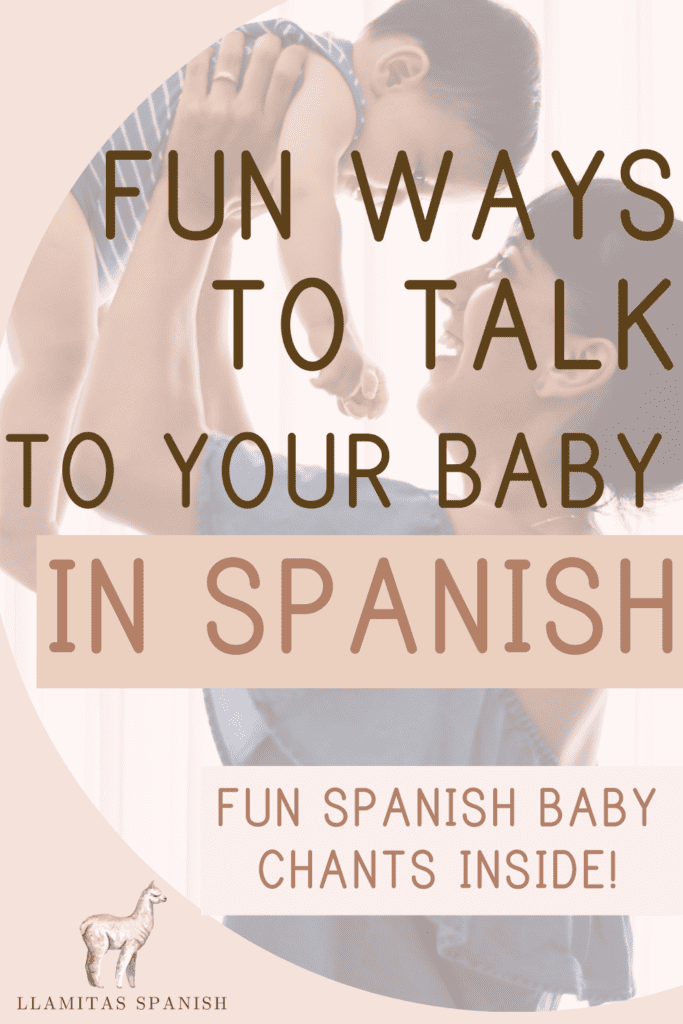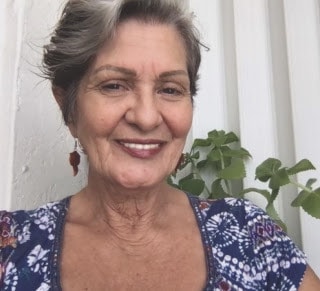In this post: Discover why it’s important to talk to your bebé and learn 6 Spanish chants that Latina moms love to say to their bebé.

Many studies have affirmed the benefits of talking to your baby, even while still in the womb, but especially as newborns.
This gives your child an advantage when it comes to developing language skills. Naturally, if your goal is to raise a bilingual family, you’ll want to start your child’s bilingual journey as early as possible. Starting from birth is a huge advantage.
For families that want to encourage early Spanish-language learning at home, Llamitas Spanish® has a multi-tiered Spanish Curriculum designed to support your child’s Spanish language journey from Preschool through elementary.
The best place to start with your little ones is with our Preschool Morning Binder when they are ready for simple printables and have basic motor skills like holding a pencil.
>>Discover the Preschool Binder here.

Table of Contents
Why is it Important to Talk to Your Bebé?
When babies begin to develop their sense of hearing, the sound they respond to most is the voice of their mother.
This soothing and familiar sound will calm them while establishing the foundation for the development of language and speech, but also their social and emotional development.
One study found that babies in the womb respond to their mothers’ voices by slowing their movements. Another found that the heart rates of both unborn babies and newborns decreased upon hearing their mother’s voice, which may be interpreted as a sign of relaxation.
Scientific Proof
One study, published in The Journal of Neuroscience, concluded that talking to your child can actually shape the development of the brain!
Scientists tested 163 children at either six months of age or 30 months of age using a small audio recorder that recorded all of the language input that each child received in a day.
These scientists also studied how these children’s brains were developing using an MRI machine to scan their brains while they slept.
The brain scans were focused on the production of myelin, a layer of fat and protein that coats nerve cells, facilitating the communication between cells.
The findings of the study determined that the 30-month-old toddlers who were exposed to more words during the testing period had produced more myelin around brain cells in language-associated regions of the brain.
This cause and effect relationship was found to be quite specific, as it showed up only in language-processing regions of the brain.
This led researchers to conclude that talking to your child actually shapes their brain.

Chants in Spanish to Say to Your Bebé
There are lots of Spanish chants and words games that Latina moms love to say to their baby! Here are some of the most popular:
Tope, tope, tope, tope, tope…
(“Top, top, top, top, top…”)
Many word games for babies in Spanish are accompanied by actions that involve movement of some part of the body.
As “tope” literally means “top” it refers to the head. This word game is perfect to play with babies as soon as they can comfortably sit up.
Simply repeat the word “tope” four times as you face the baby, and draw your faces closer together each time you repeat the word.
On the fifth repetition of “tope” gently tap your forehead against the baby’s forehead. Over time, baby begins to anticipate the forehead tap.
Tortillita, Tortillita
(“Little tortilla, little tortilla”)
This is a simple word game in which the word “tortillita” (little tortilla) is repeated while bringing the palms of the hands together in a clapping motion.
El pollito, asadito, con su sal y su mojito
(“The roasted chicken, with salt and sauce”)
In this little word game, the index finger is held pointing upward as the hand twirls gently from side to side, imitating a roasted chicken drumstick.
Pon, pon, pon el dedito en el pilón
(“Put, put, put, the finger into the pot”)
In this game, the index finger of one hand is pointed, and the palm of the other hand is cupped. The index finger is tapped inside the cup of the opposite hand, keeping the rhythm of the rhyme, tapping each time the word “pon” is repeated.
Este dedito se encontró un huevito, este lo cocinó, este lo peló, este le echó la sal, y el gordito este se lo comió…
(“This little finger found an egg, this one cooked it, this one peeled it, this one added the salt, and this little fat one ate it…”)
In the spirit of the English game, “This little piggie went to market” this game is played using the fingers or toes to count off each act as it is mentioned, starting with the pinky finger or little toe, and ending with the thumb or fat toe as the one who gets to eat the egg at the end.
Sana, sana colita de rana. Si no sana hoy, sana mañana
(“Heal, heal, little frog’s tail. If it doesn’t heal today, it will heal tomorrow”)
No other cure in the entire lexicon of Hispanic home remedies is more efficient in helping to heal a boo-boo, bruise, or other childhood injury than the infamous chant of “sana sana colita de rana.”
This delightful rhyme is often accompanied by a kiss or a pat to the affected area where the child has been hurt or injured, and has been assisting the healing of boo-boos, bruises, golpes, and other injuries for generations.
Colorín colorado, este cuento se ha acabado… ¡y el tuyo no ha comenzado!
(Colorful red, this story has ended… and yours has not yet begun!”)
Story time in Spanish often ends with this phrase, a rhyming celebration of the fact that a story has reached its end.
By rhyming along with children, parents and caregivers not only keep their traditions alive, they also teach children to articulate words, and to practice tone, volume and rhythm in Spanish, as well as developing listening and concentration skills that are essential to the development of the brain and memory.
More Spanish Baby and Toddler Posts
Other baby and toddler resources available through Llamitas Spanish® to support new parents wanting to raise bilingual children, as well as your child’s Spanish language education journey:

